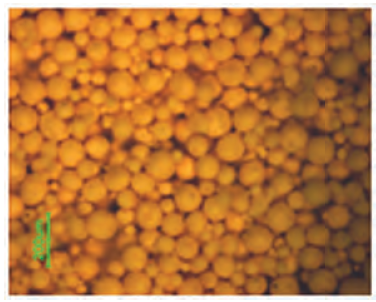A comparative study of the firing shrinkage properties of the process temperature control rings
DOI:
https://doi.org/10.60136/bas.v3.2014.162Keywords:
Ceramic, Kiln, Process Temperature Control RingsAbstract
A process temperature control ring was developed from talc, magnesium carbonate, barium carbonate, iron oxide, kaolin, and quartz. The ring is formed by dry pressing method into a 2.5 cm diameter ring with the density 1.8 g/cm3. The ring had the firing shrinkage after fired at 960°C, 1100°C, 1140°C, and 1200 °C varied in the range 2.21-9.98 % with the standard deviation varied in the range 0.00-0.06. In this study, the properties of the ring were statistical analyzed. It was found that an increasing temperature resulted in an increasing firing shrinkage but had no effect on the standard deviation values. The study also presented the comparative properties of the ring with the one available in the market in terms of the average firing shrinkage, the standard deviation and the change of the shrinkage with temperature.
References
ลดา พันธ์สุขุมธนา, การตรวจสอบอุณหภูมิการเผา, วารสารเซรามิกส์, 2554, 15(36), 22-34
Using bullers rings in statistical process control (Online). (Viewed 8 June 2014). Available from: http://www.azom.com/article. aspx?ArticleID=8172
BullersTM pyrometric Rings (Online). (Viewed 8 June 2014). Available from : http://www. mantectechnicalceramics.com/sites/default/files/ bullers_rings_brochure.pdf
Process temperature control rings (PTCR) (Online). (Viewed 8 June 2014). Available from: http://www.ferro.com/nr/rdonlyres/74f7 1fel407d-4a48-b386-24e90542a3fa/0/is04_e_ptcr.pdf
TempCHEKS (Online). (Viewed 8 June 2014). Available from: http://www.ortonceramic. com/products/tempcheks
กรมวิทยาศาสตร์บริการ. รายงานฉบับสมบูรณ์ โครงการการพัฒนาอุปกรณ์ตรวจสอบอุณหภูมิสําหรับเตาเผาอุณหภูมิสูง (ระดับต้นแบบ), 2556.
REED, S. J. Introduction to the principles of ceramic processing. New York : John Wiley & Sons, 1989, pp.464-466
KINGERY, W.D., H. K. BOWEN, and Donald R. UHLMANN. Introduction to ceramics. 2nd ed. New York : John Wiley & Sons, 1991, pp. 495-497, pp.507-508

Downloads
Published
How to Cite
Issue
Section
License
Copyright (c) 2022 Bulletin of Applied Sciences

This work is licensed under a Creative Commons Attribution-NonCommercial-NoDerivatives 4.0 International License.









